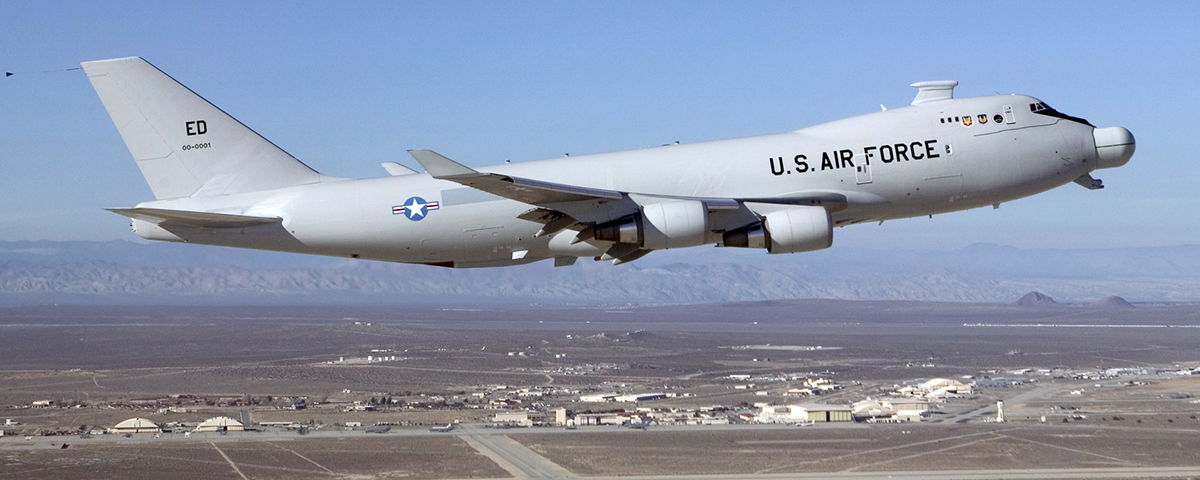The Boeing YAL-1 Airborne Laser
The YAL-1 Airborne Laser testbed conducted experiments that explored the possibility of using laser technology against nuclear weaponry. It was designed to target and disable tactical ballistic missiles with a megawatt-class chemical oxygen iodine laser (COIL). Mounted in the airplane’s nose, the laser would be guided to within range of its target missile after detecting its plume from several hundred kilometers away.
The COIL’s platform was a modified Boeing 747-400F. Four General Electric CF6-80C2 turbojet engines, each producing 62,100 pounds of thrust, gave it a maximum speed of 630 mph and a ceiling of 35,000 feet.
First flying on July 18, 2002, the YAL-1 began testing its COIL in 2007. The laser was used to intercept a test missile in January 2010, and destroyed another two test subjects that February. By then, however, interest in the project was waning, due to the COIL’s inability to reliably target missiles with lower heat signatures. That essentially limited its targets to tactical nuclear missiles at ranges so close as to require large numbers of the expensive aircraft to form a reliable defensive screen. In 2010 funding was cut, and the project was canceled in December. On February 14, 2012, the YAL-1 made its last flight to Davis-Monthan Air Force Base near Tucson, Ariz., where it was assigned to the 309th Aerospace Maintenance and Regeneration Group. Any last hope of revival ended in September 2014, when the airplane was stripped of useful components and scrapped.

